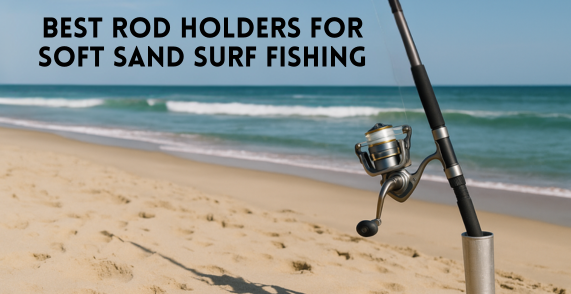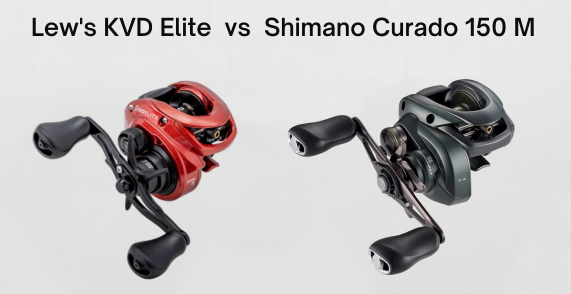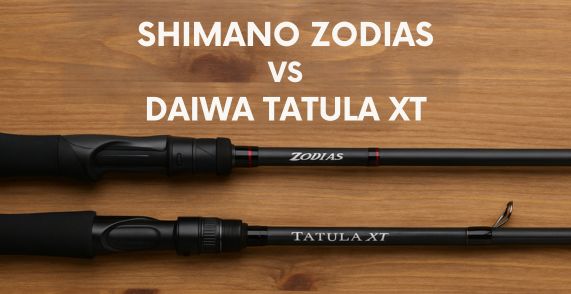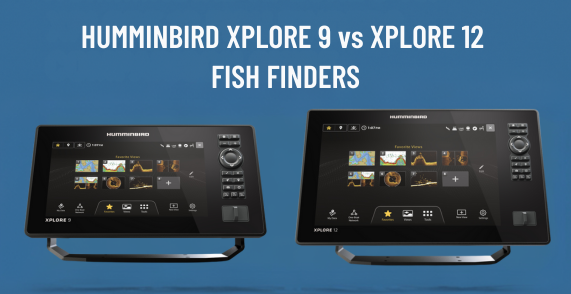In This Post
- 1 Key Takeaways
- 2 Secure Your Gear: Why Rod Stability in Soft Sand Is Critical
- 3 Material Matters: What Makes a Rod Holder Truly Stable
- 4 Top 5 Rod Holders That Master Soft Sand Conditions
- 5 Key Design Features That Guarantee Stability
- 6 DIY Solutions That Actually Work
- 7 Master These Techniques for Any Rod Holder
- 8 Transform Your Surf Fishing with the Right Rod Holder
Key Takeaways
- The best rod holders for soft sand combine strong materials (aluminum or stainless steel) with specialized design features like auger tips or foot pedals
- Longer rod holders (45+ inches) provide superior stability and keep fishing lines safely above breaking waves
- The AugHog Big Rod with its auger-tip design creates exceptional anchoring power by actually compacting the sand around it
- Simple installation techniques like the ‘suck down’ method can dramatically improve the stability of any rod holder in soft sand
Secure Your Gear: Why Rod Stability in Soft Sand Is Critical
Surf fishing in soft sand presents a unique challenge that can quickly turn frustrating without the right equipment. Unlike firm ground that provides natural resistance, soft sand easily gives way under pressure, putting your valuable fishing gear at risk.
When a big fish strikes or a strong wave hits, an inadequate rod holder can pull free, potentially sending your expensive rod and reel into the surf.
I’ve spent countless hours on sandy beaches testing different rod holders in various conditions. What I’ve learned is that stability isn’t just about convenience—it’s about protecting your investment and maximizing your fishing success.
Selecting the right rod holder for soft sand conditions is often the difference between an enjoyable day of fishing and a frustrating experience of constantly resetting your gear.
Material Matters: What Makes a Rod Holder Truly Stable
The material of your rod holder directly impacts its performance in soft sand, with each option offering distinct advantages and limitations based on your needs and budget.
PVC: Budget-Friendly But Limited Durability
PVC rod holders represent the most affordable option, typically costing between $5-20. They’re lightweight, making them easy to transport and deploy, and naturally resist corrosion in saltwater environments.
Many anglers, especially beginners, start with PVC holders because they’re widely available and simple to use.
However, PVC comes with significant drawbacks in soft sand conditions. The material lacks the strength needed to withstand powerful fish strikes or strong wave action.
When subjected to lateral force, PVC can crack or snap, potentially resulting in lost gear. Additionally, the typically blunt tips of PVC holders make deep penetration into soft sand challenging without a mallet.
Aluminum: The Sweet Spot of Strength and Weight
Aluminum rod holders offer a significant upgrade in stability and longevity compared to PVC options. They provide excellent strength while remaining relatively lightweight and portable.
The corrosion resistance of anodized aluminum makes it particularly well-suited for saltwater environments, standing up to the harsh conditions of surf fishing.
What makes aluminum truly stand out for soft sand applications is its availability in angle iron configurations. These designs have been described by experienced anglers as significantly improving stability in soft sand.
The rigid structure of aluminum angle iron creates a much more resistant anchor point that won’t bend or flex when a fish strikes.
Users consistently report that these holders ‘hold better even with no mallet’ and ‘won’t ever break’ when properly constructed with quality welds.
Stainless Steel: Premium Longevity for Serious Anglers
For those seeking the ultimate in durability and performance, stainless steel rod holders represent the premium tier of options. These holders are essentially overbuilt by design, created to withstand the most challenging conditions and the strongest fish.
The extraordinary corrosion resistance of stainless steel ensures these holders will remain functional for decades, even with regular exposure to saltwater.
While they tend to be the heaviest and most expensive option, stainless steel holders are considered heirloom-quality pieces that serious surf anglers invest in for the long term.
The additional weight can actually be beneficial in soft sand, providing more mass to resist uplift forces when a fish strikes.
Top 5 Rod Holders That Master Soft Sand Conditions
1. AugHog Big Rod: Superior Auger-Tip Design
The AugHog Big Rod stands out for its innovative auger-tip design that actively engages with soft sand.
Unlike standard pointed tips that simply penetrate, the auger mechanism actually screws into the sand, densifying it around the holder to create a significantly stronger anchor point.
Measuring an impressive 4 feet 6 inches in length, the AugHog provides ample height to keep your line above breaking waves. It’s constructed from impact and UV-resistant materials with stainless steel fasteners that won’t corrode in saltwater.
Users consistently praise its exceptional stability, with reports that it ‘augers into the ground easily to keep you firmly in place all day long’ and experiences ‘never a pullout even while hooking up the bull reds.’
2. Surf Shark Aluminum: Integrated Foot Step Technology
The Surf Shark Aluminum Rod Holder excels in soft sand thanks to its solid aluminum construction with high-quality TIG welds for maximum durability.
The standout feature is its integrated foot step, which allows you to drive the holder deep into soft sand without requiring excessive force or additional tools.
At 45 inches in length, this holder provides excellent clearance for surf fishing. The robust aluminum construction is described by users as ‘solid as steel’ and ‘built to last.’
The foot step design makes a significant difference in achieving proper insertion depth, even in challenging ground conditions, with one user noting it ‘easily hammers in’ even when the ground is hard.
3. BLUEWING Adjustable Sand Spike: Customizable Depth Settings
The BLUEWING Adjustable Sand Spike brings versatility to the table with its adjustable design that features multiple depth settings.
Available in V3 (2 depth settings) and V4 (5 depth settings) models, this holder allows you to customize both insertion depth and rod angle based on the specific sand conditions you’re facing.
Constructed from high-quality anodized aluminum for corrosion resistance, the BLUEWING incorporates a widened foot pedal for effortless pushing into soft sand.
Its sharp, durable tip penetrates easily into tough beach sand, while the adjustable design lets you adapt to changing conditions throughout your fishing session.
The V4 model features a thickened construction for enhanced durability in the most demanding situations.
4. Over the Waves Sand Sticks: Height Advantage for Surf Breaks
Over the Waves Sand Sticks are specifically engineered for surf fishing in locations with significant wave action.
Their exceptional length of 56-58 inches provides crucial height to keep your line above breaking waves, a critical advantage when fishing in surf conditions.
These aluminum rod holders are endorsed by professional anglers who describe them as ‘the best they ever fished with’ because they ‘check all the boxes’ for serious surf fishing.
Each unit features a signature red flag for visibility and is constructed from lightweight yet durable aluminum that stands up to saltwater exposure. The extra height means these holders perform particularly well in soft sand where achieving sufficient elevation can be challenging.
5. Offshore Angler Sand Spike: Night Fishing Visibility
The Offshore Angler Sand Spike combines a strong aluminum shaft with a sharp penetrating point, making it highly effective in soft sand conditions.
What sets this holder apart is its glow-in-the-dark features, with both the V-collar and rod butt glowing for excellent visibility during night fishing sessions.
Its adjustable rod butt accommodates any size baitcasting or spinning rod, providing versatility for different fishing setups.
The aggressive spike design ensures secure anchoring in soft sand, while the visibility features prevent trips and falls when fishing in low light conditions – a significant safety advantage for night surf anglers.
Key Design Features That Guarantee Stability
1. Auger Tips: How They Create a Locked-In Anchor Point
Auger-style tips represent a significant advancement over simple pointed spikes. When twisted into the sand, these helical blades actually densify the surrounding sand through their mechanical action.
This creates a stronger, more resistant anchor that won’t easily pull out when under pressure from a fighting fish or strong wave.
Unlike straight spikes that simply displace sand, augers actively engineer the sand around them, increasing its density and thus the overall holding power.
This makes them exceptionally effective in very loose or ‘quicksand-like’ conditions where traditional spikes might constantly work themselves loose.
2. Foot Pedals: Effortless Deep Penetration Without Tools
Foot pedals or steps integrated into rod holders represent an ergonomic improvement for surf fishing in soft sand.
These widened platforms allow anglers to apply their full body weight directly to the insertion process, eliminating the need for mallets or other tools that add weight to your gear load.
The foot step design translates downward force efficiently, allowing for deeper penetration with less effort. This is particularly valuable in soft sand where achieving sufficient depth is essential for stability.
Users consistently describe the insertion process with foot pedals as ‘one step and you’re done,’ highlighting the time and energy savings compared to traditional designs.
3. Length Requirements: Why 36+ Inches Matters in Soft Sand
The overall length of a rod holder directly impacts its performance in soft sand, with longer models offering distinct advantages.
As a general rule, approximately one-third of the holder will be buried in the sand when properly installed. This means a longer spike allows for both deeper anchoring and greater height above the sand.
Professional-grade rod holders typically range from 45 to 57 inches in length, with the extra height serving two critical functions.
First, it keeps fishing lines elevated above breaking waves, preventing them from being caught in the surf and improving bite detection. Second, the increased buried portion provides dramatically more resistance to pull-out forces when a fish strikes.
4. Sharp Points vs. Blunt Ends: The Physics of Sand Penetration
The design of a rod holder’s tip fundamentally affects its ability to penetrate soft sand efficiently.
Sharp, angled points significantly reduce the initial resistance encountered during insertion, allowing for deeper and more secure placement without excessive force.
For DIY PVC holders, cutting the end at a 30-45 degree angle creates an effective penetrating tip. Commercial aluminum and steel models often feature precision-engineered points specifically designed for optimal sand penetration.
The angle and sharpness of the tip not only facilitate easier insertion but also influence how the spike displaces sand, contributing to the initial grip and preventing immediate pull-out.
DIY Solutions That Actually Work
Schedule 40 PVC: Simple $5 Solution for Casual Anglers
Creating your own PVC sand spike is a straightforward and highly economical project that can yield effective results for casual surf fishing. The basic process involves:
- Start with a 6-foot length of 2-inch diameter Schedule 40 PVC pipe (approximately $10-12 at most hardware stores)
- Cut it in half to make two 3-foot spikes
- Cut one end of each pipe at a 30-45 degree angle to create a sharp point
- Sand the cut edges to remove any sharp points that could damage your fishing rod
- Drill a hole about 18 inches from the top and insert a stainless steel bolt to serve as a stop for your rod butt
This simple design costs only about $5-6 per spike and works reasonably well for keeping your rod secure in most soft sand conditions.
The limitations become apparent when fishing for larger species or in rough surf, where the PVC may flex or even break under significant pressure.
Hybrid Metal-PVC Designs: Strength Without Breaking the Bank
To address the durability limitations of pure PVC while maintaining reasonable cost, many experienced anglers create hybrid designs that combine the strength of metal with the lightweight properties of PVC. A popular approach involves:
- Attach a 1.5-inch or 2-inch diameter PVC pipe (2.5-3 feet long) to a 3-4 foot length of stainless steel or aluminum angle iron
- Secure the connection using stainless steel hardware or heavy-duty hose clamps
- The metal component provides the strength and penetration capability, while the PVC serves as the rod holder portion
These hybrid designs offer significantly improved stability and durability compared to all-PVC versions, with users reporting they ‘hold better even without a mallet’ and won’t break when fighting larger fish.
While more expensive than basic PVC (typically $15-25 in materials), they remain far more economical than premium commercial options while offering comparable performance.
Rebar Reinforcement: The Secret to DIY Stability
Another effective DIY approach uses the strength and weight of steel rebar to create an exceptionally stable rod holder for soft sand. This method involves:
- Use a 24-inch length of 5/8-inch diameter rebar
- Cut one end at a 45-degree angle for easier penetration
- Attach a 12-inch section of PVC pipe to the top using hose clamps or U-bolts
- The rebar is driven deep into the sand, and the PVC sleeve slides over it to hold the rod
The significant weight and narrower profile of the rebar allow for exceptional penetration and stability in even the softest sand conditions.
The steel component remains in the sand during use, while the PVC portion protects your rod from damage. This design combines the best aspects of both materials for a high-performance, low-cost solution.
Master These Techniques for Any Rod Holder
1. The ‘Suck Down’ Method for Instant Anchoring
The ‘suck down’ technique is an effective approach for quickly and securely deploying rod holders in wet sand without requiring excessive force. Here’s how it works:
- Place the pointed end of your rod holder into the sand at the waterline where the sand is wet and loose
- Cover the open top end of the tube completely with your mouth
- Suck the air out of the tube to create a vacuum
- The differential pressure causes the sand spike to sink rapidly and firmly into the sand
This method uses basic physics to your advantage, using the pressure differential created by removing air from the tube, combined with the surrounding water pressure, to drive the spike deep into the sand.
It’s particularly effective with hollow tube designs and works best in wet, loose sand near the waterline.
2. Strategic Angling for Wave Clearance and Stability
Inserting your rod holder at a slight angle rather than perfectly vertical provides dual benefits for soft sand fishing. The angled position:
- Increases the surface area of the spike in contact with the sand, distributing forces more effectively
- Provides greater resistance to pull-out when a fish strikes or waves exert pressure
- Positions the rod tip higher above breaking waves, keeping your line clear of surf and improving bite detection
For optimal results, angle the holder slightly away from the water, allowing the rod tip to extend over the waves. This strategic positioning improves both mechanical stability and the functional aspects of your fishing setup.
3. Wet Sand Packing for Enhanced Grip
Wetting the sand around your rod holder creates a significantly stronger anchoring effect through basic soil mechanics. When sand is dampened:
- Cohesive forces develop between individual sand grains, dramatically increasing stability
- The material’s angle of repose increases, making it more resistant to displacement
- The sand becomes more compact and provides a firmer grip on the rod holder
After inserting your spike, pour or splash some water around the base and pack the wet sand firmly around it.
This simple step can transform an adequate hold into an exceptionally secure one, particularly useful when fishing for larger species or in windy conditions.
4. Depth Testing Before Committing Your Rod
Before entrusting your valuable fishing rod to any holder, perform a quick stability test to ensure it’s adequately secured:
- After insertion, grasp the top of the rod holder and apply moderate lateral pressure in different directions
- If there’s significant movement or the holder feels loose, remove and reposition it
- For optimal stability, at least one-third of the holder should be buried in the sand
- In very soft conditions, aim for even deeper insertion when possible
This simple test takes only seconds but can prevent potential equipment loss or damage. Different areas of the beach may have varying sand consistency, so always test each new position before committing your rod.
Transform Your Surf Fishing with the Right Rod Holder
Selecting the appropriate rod holder for soft sand conditions makes a remarkable difference in your surf fishing experience.
Whether you choose a premium commercial option with advanced features or craft your own DIY solution, the key is understanding how design elements interact with soft sand to create stability.
By focusing on material strength, insertion depth, and proper deployment techniques, you can achieve rock-solid stability even in the most challenging beach conditions.
This stability not only protects your valuable gear but also enhances your fishing effectiveness by maintaining optimal rod positioning and improving bite detection.







